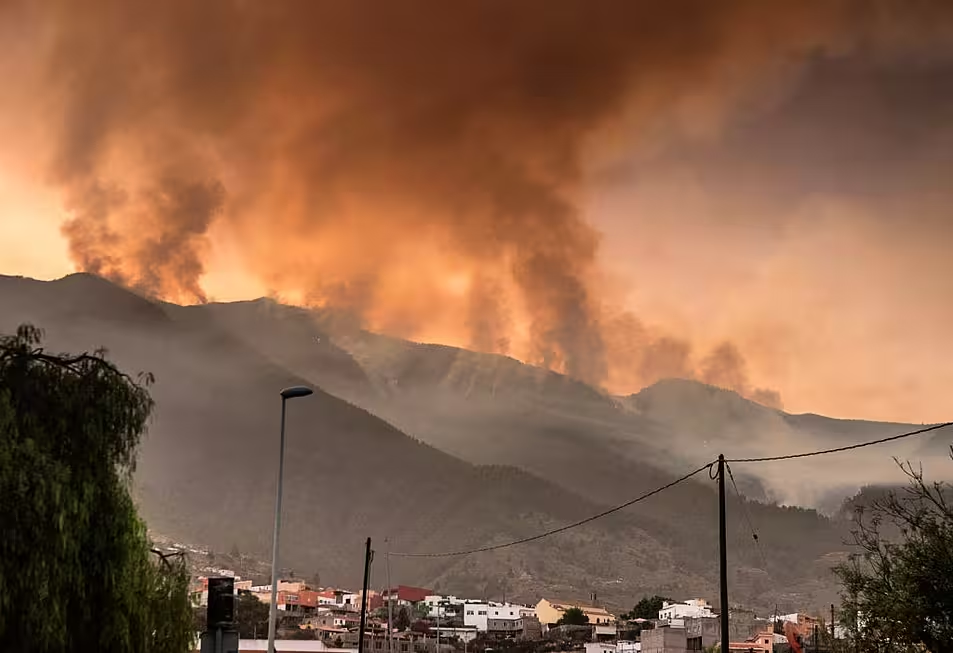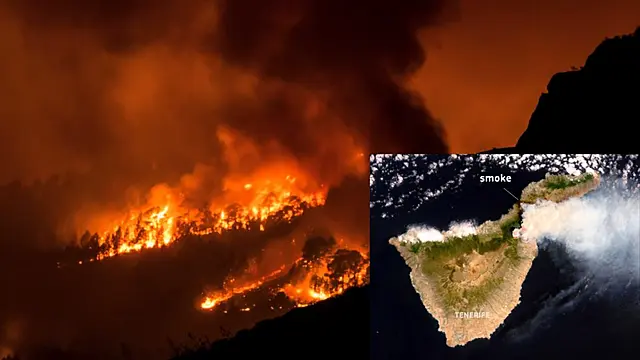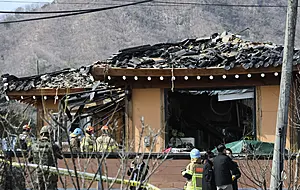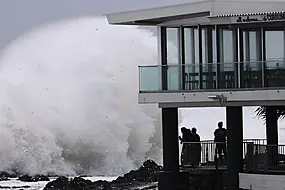Firefighters are struggling to contain a wildfire in a mountainous national park on the Spanish island of Tenerife, prompting authorities to evacuate some 3,800 people.
Images from the European Union's Copernicus Sentinel-3 satellites show the smoke cloud generated by the wildfire reaching the neighbouring island of Gran Canaria.
The fire's perimeter expanded to 31km across dry woodland covering both flanks of steep ravines near the Mount Teide volcano – Spain's highest peak – hampering access to the area and covering much of the island with smoke clouds and ash.

The fire, which broke out on Wednesday, has burned through 2,600 hectares of land.
"The night has been very tough... This is the most complex fire we've had in the Canary Islands in the last 40 years," the region's leader, Fernando Clavijo, told a news conference.
Pedro Martinez, head of emergency services in Tenerife, said the fire had spread to the north and towards a valley where several camping sites are located.
While some villages were evacuated out of precaution, residents in a few others were ordered to stay home, affecting a further 3,500 people.
A prison and a migrant reception centre were in the areas under confinement, Clavijo said.
Civil protection removed 1,294 people from their homes in the municipality of El Rosario and 1,525 from areas of La Orotava on Thursday, with total evacuations reaching 3,800 people.

Authorities deployed 17 aircraft and a combined 350 firefighters and military personnel. Additional waterbombing aircraft arrived from the mainland.
All access to the mountains on the island, including tourist-favourite Mount Teide, has been closed off to prevent any incidents.
Tenerife's two airports were operating normally, Spanish airport operator Aena said.
Last week, a heatwave in the Canary Islands left many areas bone dry, heightening the risk of wildfires.
This summer, firefighters have extinguished a series of forest fires on the islands of Gran Canaria and La Palma, which form part of the Canary Islands archipelago.







